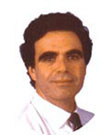LASIK is an excellent procedure as proven by millions of satisfied people who’ve had this procedure done in the USA in the last decade. A recent worldwide review of literature on LASIK revealed that there is a 95% satisfaction rate with the procedure http://ascrs.org/press_releases/World-Study-Shows-95-Percent-LASIK-Satisfaction-Rate.cfm
That’s why NASA has aproved LASIK for astronauts http://www.prnewswire.com/mnr/intralase/29864/docs/29864-AMO_NASA_Infograph_FINAL.pdf and other branches of the military have approved LASIK for people in the armed forces. However, no procedure is perfect, and there are always risks to any surgery, just as there are risks to driving a car or flying in a plane (although those risks are not told to people who buy cars or fly in planes – it is assumed by the auto and airline industry that travelers know that).
The FDA has apparently received 140 complaint letters from patients in the last 8 years citing various forms of dissatisfaction with their LASIK results. Before we discuss dissatisfaction with LASIK, we must define what we mean by dissatisfaction. The media has devoted much coverage to the FDA-LASIK story this past week, but most of it is in the form of short anecdotes where there is not enough time to discuss important details – as seen on my CBS News Interview from April 24, 2008 http://www.cbsnews.com/sections/i_video/main500251.shtml?id=4040188n
There are several possibilities for why patients may not be satisfied with the results of their LASIK procedure. Some of these are preventable and some are not. The 1st type of dissatisfaction is a poor result due to laser or equipment malfunction. This is extremely rare with current state-of-the-art laser technology, but can occasionally occur. If the malfunction occurs because of improper maintenance of equipment, then that is preventable, however, if the malfunction occurs unpredictably, then that cannot be avoided. Fortunately, equipment malfunction because of poor maintenance is extremely rare in the USA, and unpredictable malfunction is rarer.
The 2nd type of dissatisfaction occurs because of less than meticulous pre-LASIK screening of patients. There are multiple parameters that must be evaluated before a patient is determined to be a good candidate for LASIK. These include the degree of nearsightedness, farsightedness and astigmatism that requires correction, the curvature of the central and peripheral cornea and the expected postoperative corneal curvature, the corneal thickness, the pupil size in light and dark environment, the degree of dryness of the eye if any, and several other eye health and systemic health criteria. If all the preoperative parameters for LASIK are carefully and meticulously evaluated preoperatively, then inappropriate candidates can usually be excluded with great certainty.
The 3rd type of dissatisfaction may occur because of a poor result due to surgeon error during the procedure. This is also a very uncommon event since surgeons go through elaborate training to be certified to perform LASIK, however, very rarely surgeon errors can occur even with highly experienced surgeons who have performed hundreds or thousands of LASIK procedures.
The 4th type of dissatisfaction stems from patients having unrealistic expectations from LASIK. I have come across patients who expect to see golf balls 350 yards away after having LASIK, and 50+ year-old patients who expect that they will be able to read without reading glasses after correction of their distance vision via LASIK. The latter is not possible because everyone in that age group has presbyopia, and requires reading glasses if their distance vision is fully corrected in both eyes with LASIK. Some patients have the unrealistic expectation that their vision can be guaranteed to become 20/15 or 20/20 (without glasses or contact lenses) after LASIK. While in the vast majority of cases this is achieved, because of biologic variability of corneas and their reaction to laser light, some patients will only achieve 20/25 or 20/30 vision from LASIK, and some will need a second or enhancement procedure to fine tune their vision. Patients with unrealistic expectations can be screened out before they have LASIK by having lengthy, detailed discussions with them prior to the procedure to make sure they understand what LASIK accomplishes, and that guarantees are not possible.
A 5th form of dissatisfaction can arise in the extremely rare event where a patient is a perfect candidate, the procedure is done perfectly by an experienced surgeon with the latest highly maintained equipment, yet the patient has less than optimal results because of idiosyncratic healing of their eyes after LASIK.
All 5 forms of dissatisfaction discussed above are covered in a LASIK consent form which every patient should read carefully and discuss with their surgeon preoperatively. It has been my experience after 12 years of performing LASIK and Laser Vision Correction, that if the appropriate meticulous preoperative screening is done, if the latest state of the art equipment is maintained properly, if the procedure is done by an experienced surgeon, and if the patient is educated regarding proper expectations from LASIK then the LASIK satisfaction rate approaches very close to 99+%.
Nothing in medicine is 100%. I think that the FDA panel will find this as well.
Robert Cykiert, M.D.
President,
WhatDoctorsThink.com
DoctorNet.com
LasikGo.com
April 26, 2008
Sunday, April 27, 2008
FDA focuses on LASIK
Subscribe to:
Comments (Atom)
